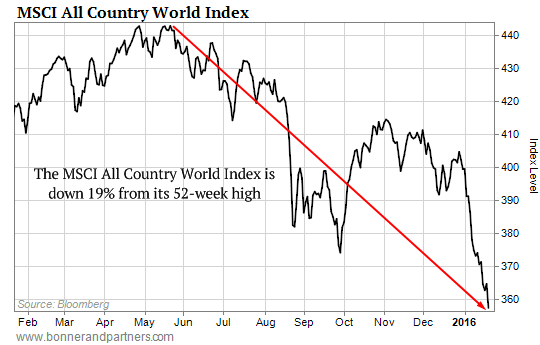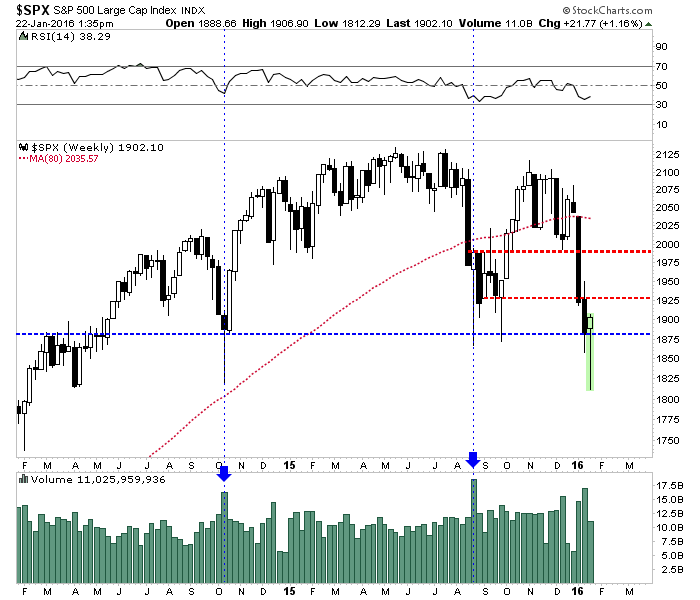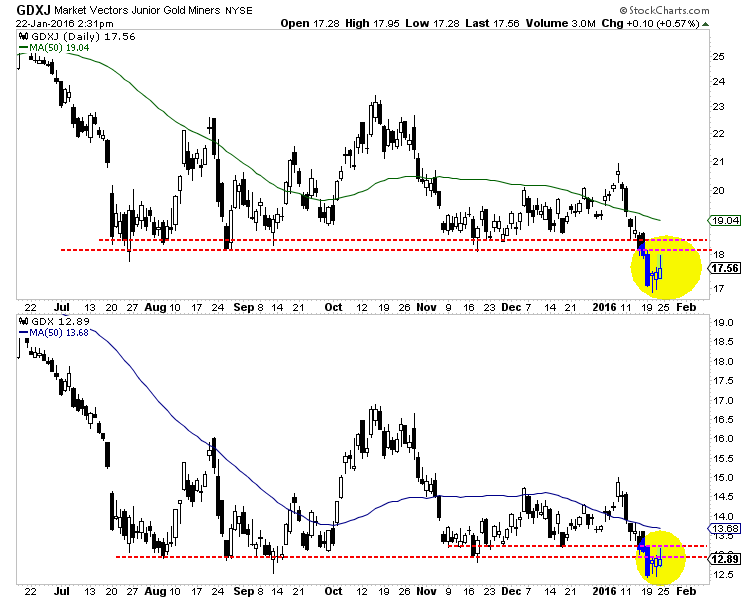Asset protection
He Also Warned How Terrifying It Will Become
Devastating Bear Market To Correct Gains Since 1932
Richard Russell: “My thinking is that this is the big bear market that will correct the entire rise from the 1932 low. In all my years of writing since 1958 I have never allowed my subscribers to stay invested through a primary bear market. I have kept my subscribers out of common stocks (except gold). For most of this bear market, we will stay on the sidelines, until I have evidence the bear market has ended……continue reading HERE

 Jim Rogers is shorting U.S. equities and predicting a U.S. stock market crash in 2016.
Jim Rogers is shorting U.S. equities and predicting a U.S. stock market crash in 2016.
Billionaire investor and legendary fund manager Jim Rogers is almost certain that the global market upheavals triggered at the beginning of this year will spark a U.S. stock market crash in 2016 that will likely be worse than the global stock market crash of 2008.
In one of his latest interviews, Jim Rogers revealed that he is short on the S&P 500 and Dow indices and long on the U.S. dollar and Chinese markets.
Moreover, Rogers forecasts gold prices will tumble below $1,000 an ounce. He believes that the inflated U.S. dollar will further depress the prices of safe haven investments like gold and silver.
Gold and Silver have held up well during the recent selloff in equities. From December 28 through Wednesday the broad NYSE lost 10.4% while the S&P 500 lost 9.6%. Precious Metals gained strength during that period. Gold advanced 3.0% while Silver gained 1.7%. Gold relative to the NYSE broke its downtrend and touched an 11-month high. Gold relative to global equities (excluding the US market) reached a 2-year high. Precious metals have clearly benefitted from the equity selloff but therefore figure to lose strength as the equity market begins a relief rally.
Equities have become very oversold and are forming a bullish reversal. The weekly candle chart of the S&P 500 is shown below. The market is forming a bullish hammer (reversal candle) right at important support. The week is not over but we expect volume to be sizeable. The last two hammers on big volume came at the October 2014 and August 2014 lows. The market became extremely oversold this week as only 15% of stocks within the NYSE were trading above their 200-day moving average. That is the lowest figure in more than four years. Furthermore, various sentiment indicators are showing extreme pessimism. The AAII survey for example is showing the lowest amount of bulls since 1987.
S&P 500 Weekly Chart
The S&P 500 could rally as high as 1990 where there is major resistance. Wednesday’s low should hold for at least a few months.
The recent poor performance of the gold miners is another signal that the metals (Gold and Silver) are at risk of making lower lows. During the aforementioned period when the metals were positive the miners (GDX and GDXJ) lost 9.6% and 12.0%. That relative and nominal weakness is a strong signal that the recent strength in the metals is unlikely to last.
GDX and GDXJ are charted below. The miners are recovering in part due to the recovery in the stock market. They are also retesting Tuesday’s breakdown to new lows. The rally has been weak as there is strong resistance overhead in the form of recent support ($18 for GDXJ and $13 for GDX) and the 50-day moving averages.
GDXJ & GDX Daily Candles
Recent relative weakness in the gold miners along with the bullish reversal in the equity market is a bearish development for precious metals. Gold and surprisingly Silver have held up well amid the decline in equities. They enjoyed a safe-haven bid yet are likely to lose that bid as the equity market begins a relief rally. The gold stocks, while initially following the stock market could resume their decline once metals have resumed their downtrends. Precious metals bulls should wait for an extreme oversold condition amid extreme bearish sentiment before turning bullish. As we navigate the end of this bear market, consider learning more about our premium service including our favorite junior miners which we expect to outperform in 2016.
Jordan Roy-Byrne, CMT
 Twice in the last 15 years, markets have tried to correct the mistakes and excesses of the Bubble Epoch.
Twice in the last 15 years, markets have tried to correct the mistakes and excesses of the Bubble Epoch.
Each time, the Fed came back with even more mistakes and excesses. Trillions in new credit… lower lending rates… easier terms… ZIRP… QE… and the Twist!
Over the short run, markets respond to myths. Investors are ready to believe almost anything… for a while.
But over the long run, there is death and destruction – a reality outside of what we believe.
No matter how badly investors want asset prices to go up, for example, asset prices don’t always comply.
Market Mythology
Yesterday, the Dow sank 560 points in the first few hours of trading. It then recovered half of those losses to end the day down 249 points – for a 1.5% fall.
U.S. crude oil plunged below $27 a barrel – the lowest level in 13 years.
The financial media don’t know what to do. Typically, they downplay a bear market as long as they can… explaining the many reasons why the sell-off is “overdone” and why the “bottom” has already been found.
The Wall Street Journal, for example, tells us that the “market’s panic is incongruent” with economic reality. Yahoo! Finance already sees “signs of capitulation.” It offers advice on “how to trade a bear market,” too.
At the Diary, we don’t believe you should try to “trade a bear market.” Bears are treacherous and unpredictable. Our best advice is to stay out of its way.
We don’t know whether it will get uglier now… or further down the road. But sooner or later, markets will retest the myths that support today’s asset prices.
They will begin by asking questions: Are stocks too expensive? Can investors repay their debt? Is the economy capable of real growth? Can a small bunch of PhD economists with no market or business experience really manage the entire world’s economy?
As to the first, second, and third questions, we don’t know the answers. But the answer to the fourth is an unhedged, undiluted “no.”
Only Human
Greenspan, Bernanke, and Yellen are, after all, only human.
They respond to myths as much as anyone… maybe more. They’ve spent their entire careers studying the sacred texts of modern economics. Like Talmudic scholars late in life, they aren’t likely to convert to Baptists!
They say they want inflation at 2%. Not 1%. Not 3%. Two hundred basis points – no more, no less.
What theory… what experience… what revelation leads them to think that an economy should have annual price increases of 2%? There is none. It is a modern myth.
In reality, prices go up and down on supply and demand. There’s no more reason they should always go up by 2% than down by 2%.
The PhDs at the helm of the world’s central banks also believe they can change people’s buying, selling, and investing decisions – for the better – by providing them with false data. We have no doubt the Fed can change behavior. It’s the “for the better” part that troubles us.
Interest rates by Fed diktat, for example, send completely phony signals, since they disguise the true cost of credit. The theory goes that low interest rates motivate people to borrow and spend. But where’s the evidence? Isn’t there an economic law somewhere that cutting incomes for savers has the opposite effect?
And there’s more to the story. There’s a reality, as well as a myth.
Reality is that resources are limited. Prices tell us what we’ve got to work with. Falsify prices and you get errors of omission and commission. After a while, the system suffers from things it shouldna, oughtna done.
As Hjalmar Schacht, Germany’s minister of economics in the 1930s, put it: “I don’t want a low rate. I don’t want a high rate. I want a true rate.”
An honest interest rate tells the truth about how much savings are available and at what price. People still make mistakes; they still get up to some pretty weird stuff. But at least the perverts aren’t handing out candy on the playground.
Greasy Numbers
Then there’s the “unemployment rate.”
The feds look at its figures and tell us the recovery has been a success… because the unemployment rate is back down to about 5%.
They are citing as “fact” a statistic so greasy even a witchdoctor would be embarrassed by it.
In December, for example, the Bureau of Labor statistics announced that 281,000 Americans had found jobs. This was widely regarded as a triumph for the Fed. Many times has Janet Yellen said she feels the pain of the jobless. Naturally, she takes great pride in the current job picture as she has painted it.
But as you have probably heard by now, only 1 out of every 28 of those new hires can buy you a beer to toast their newfound fortune. The others – 270,000 of them – don’t exist.
The feds merely made a “seasonal adjustment.” The jobs were mythical, in other words.
Mythical facts. Mythical theories. Mythical recovery.
Watch out. The market is a myth buster.
Regards,
Bill
Market Insight
by Chris Lowe
The “stealth” bear market in stocks Bill warned about in the January 6th issue of the Diary is fast becoming a full-blown global bear market.

The MSCI All Country World Index tracks stocks in 23 advanced economies and 23 emerging economies around the world.
As you can see from today’s chart, it’s down 19% from its 52-week high.
The standard definition of a bear market is a sustained fall of 20% or more from a recent high.
Further Reading: The ongoing rout on Wall Street is just the start of what Bill calls the “Great American Credit Collapse.” It’s a disaster the feds already spent more than $4 trillion to prevent… but even that couldn’t stop what’s heading our way.
To find out how it’s all going to unravel – and what you can do to sidestep the worst of it – watch Bill’s urgent warning here.
 Italian Bank Customers Pull Deposits
Italian Bank Customers Pull Deposits
The CEO of Monte dei Paschi, Italy’s third largest bank, and the oldest surviving bank in the world, admits Customers Pulling Deposits as share prices sink.
Some Monte dei Paschi customers have been pulling savings out of the Italian bank, its chief executive said on Wednesday, as it faces a crisis over a mountain of bad loans that has wiped nearly 60 percent off its market value this year.
CEO Fabrizio Viola did not say how much money savers had withdrawn, or when the outflow began, though he said the fall in deposits was “limited” and that the bank could cope with it as he sought to reassure customers and investors.
Italian bank shares have lost 24 percent since the beginning of 2016 as investors, already rattled about global economic growth, have sold out of a sector with low profitability and about 200 billion euros ($218 billion) of loans that are unlikely to be repaid.
Monte Paschi – Italy’s third-biggest bank – has lost the most ground as it is perceived to be the most vulnerable; it has the highest level of bad loans as a proportion of assets and was the worst performer in a 2014 health check of euro zone lenders.
“Of course clients turning to our local branches are worried about what they read,” Viola said in a statement.
“At present the size of the funding lost due to clients who decided to move part of their savings elsewhere is limited and anyway below levels seen during the previous crisis the bank faced in February 2013 which was overcome brilliantly.“
















